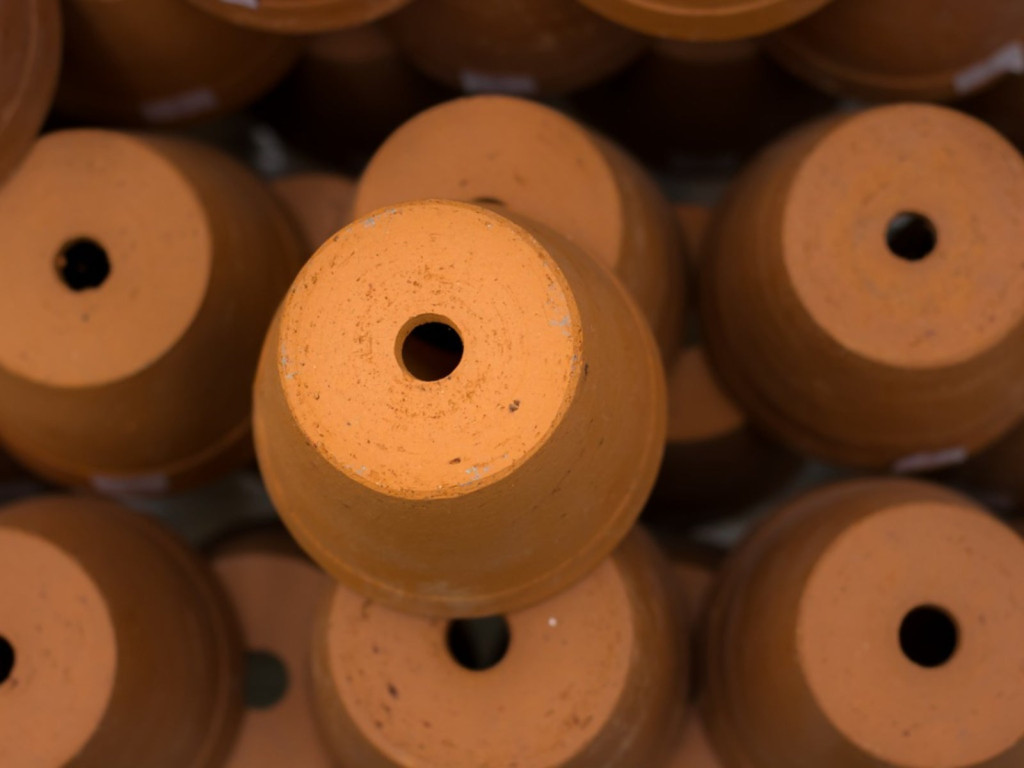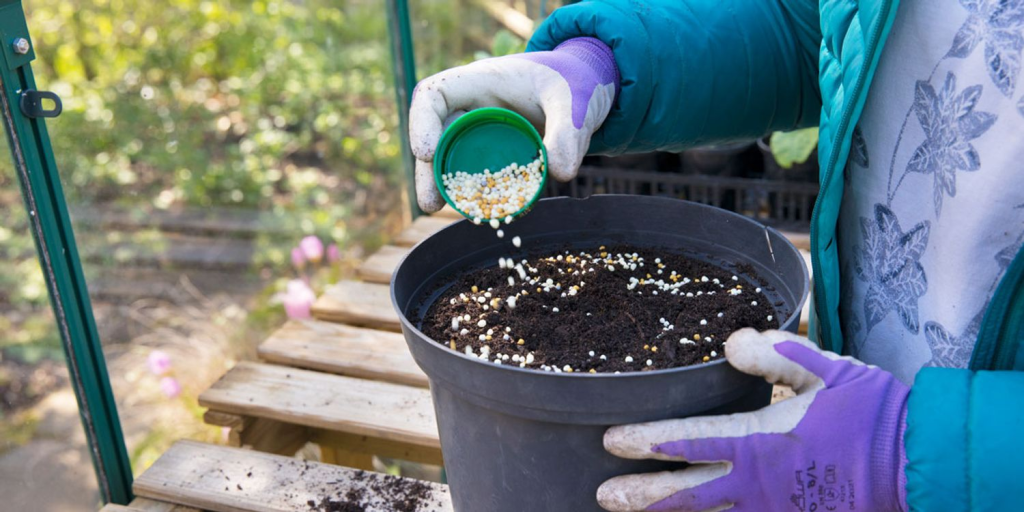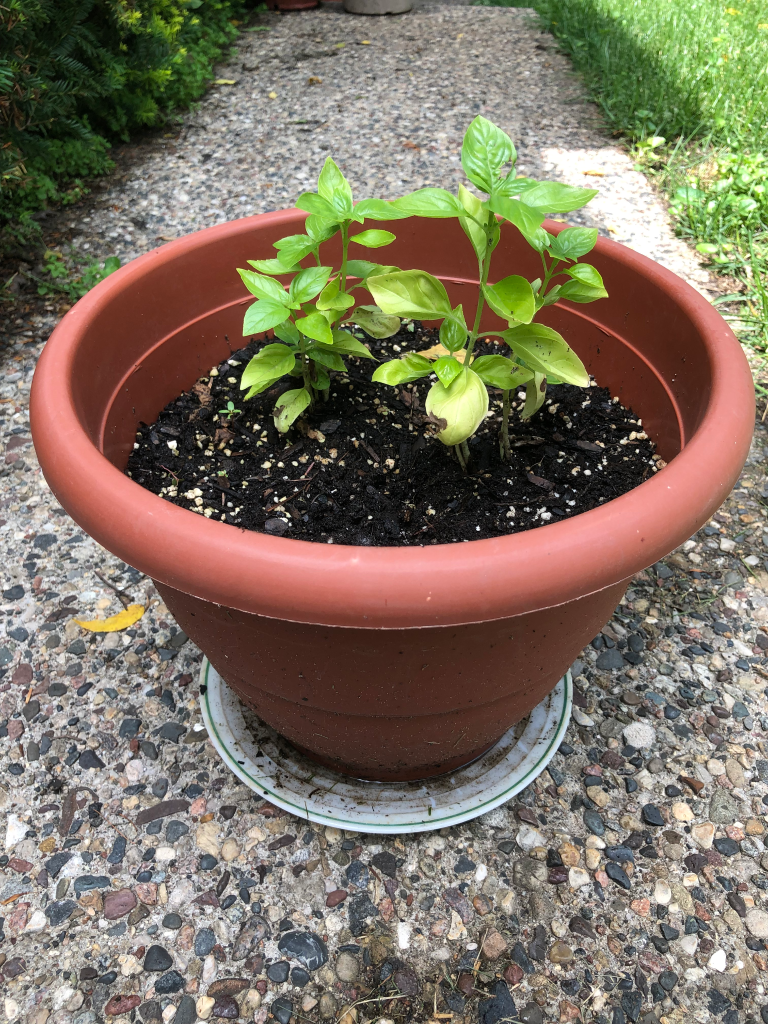Balcony planters, porch pots, and patio buckets all thrive or fail based on what’s packed around their roots. A loose, well-draining base beats heavy yard dirt because it lets water slip through while also helping to trap oxygen for delicate feeder roots.
Aim for a potting mix that blends peat or coco coir with perlite or vermiculite so moisture and nutrients stick around without turning soggy. Choose nutrient-rich soil for container plants, refresh it each season, and follow practical container gardening tips in this guide to keep every basil, begonia, and tomato thriving.
Why Choosing the Right Soil Matters

A good potting mix is the life support system of a container garden. It’s important that you choose a blend that drains well but still remains moist. This ensures that roots get enough oxygen without drowning. That balance explains the soil impact on plants from day one.
Quality media also holds slow-release nutrients that feed tomatoes or herbs for weeks, proving the importance of soil in steady growth and disease resistance.
Lightweight mixes complete the list of container gardening essentials, as they ensure that buckets are easy to move while also insulating roots against heat swings. Pick wisely and watch every leaf thank you.
Author’s Note: Now that you understand why choosing the right soil matters, check out our post on choosing the Best Containers for Garden Plants!
Essential Qualities of Good Container Gardening Soil

Heavy, clumpy dirt in a pot suffocates roots and sends yields south fast. Key potting soil characteristics include light texture, steady moisture hold, and a neutral-to-slightly acidic pH that gives plants room to breathe and feed.
A truly lightweight potting mix relies on peat, coir, perlite, or vermiculite so water can drain yet stay available for uptake. Blended compost or slow-release fertilizer keeps nitrogen, phosphorus, and potassium on tap. Strong soil drainage and aeration then stop root rot while keeping oxygen flowing through every inch of the container.
Different Types of Container Gardening Soil Mixes
Picking container soil starts with the plant’s thirst and appetite. All-purpose blends of coir, bark, and perlite are one of the most common types of potting mix and keep annual blooms comfortably moist.
Herbs or lettuce like a richer vegetable garden soil mix using equal parts compost, coir, and coarse sand for breathability plus slow feed. Cacti and jade demand a gritty succulent soil mix with two parts pumice to one part coir so water drains before roots sulk.
DIY Potting Mix Recipe and Tips

Mixing your own potting soil keeps costs down and lets you tweak texture for each crop. A reliable homemade potting mix begins with two parts coconut coir or peat to one part perlite and one part sifted compost, giving water retention and airflow for most potted veggies and flowers.
For succulents, swap half the compost for coarse sand to sharpen drainage. Blend in a tablespoon of all-purpose organic fertilizer per gallon, then moisten thoroughly. Store the fresh gardening soil in a sealed bin and refresh batches every season. Keep notes to refine the next potting soil recipe.
Buying Guide for Commercial Potting Soils
Bag labels hide the real clues in the ingredient list, so check that first. For choosing commercial potting soil, peat or coco coir holds moisture while perlite or pumice prevents compaction.
Those hunting for organic container soil should look for OMRI or USDA seals that verify every component, including fertilizers, meets strict standards. A fresh earthy smell, even particle size, and a “soilless mix” note signal fewer pests and better aeration. Keep these quick potting soil buying tips handy and roots will thank you.
The Importance of Proper Drainage in Container Soil

Soggy roots spell trouble for any potted plant, so containers need a clear exit path for extra water. Classic soil drainage tips start with pots drilled or built with multiple holes and a mix airy enough to shed water quickly.
Blend coarse sand, perlite, or pumice into the base mix to boost container gardening drainage while still trapping just enough moisture for uptake. Regularly lifting the pot to check weight helps prevent root rot in containers before it starts.
Author’s Note: Check out How To Water Container Plants Properly for a comprehensive guide to watering container plants!
Nutrient Management in Container Gardening

Frequent watering flushes food out of the potting mix, so containers need a regular feed schedule. Begin supplementing nutrients for container plants about three weeks after planting, then repeat every couple of weeks or as a slow-release label suggests.
Yellow leaves, weak stems, or poor flowering signal shortages and call for a bump in potassium or nitrogen. For ongoing health, think of fertilizing container gardens as topping up a checking account: small deposits keep growth steady. Use a complete formula that guarantees balanced plant nutrition without overloading salts.
Common Container Gardening Soil Mistakes
Too much garden dirt packed into a pot can snuff seedlings before they sprout. The first container gardening soil mistake involves using dense ground soil that compacts and drowns roots rather than a light potting blend.
Another entry on the list of common potting mix errors is skipping drainage holes or stuffing the base with filler. Saturated bottoms breed rot and fungus gnats instead of healthy roots. Finally, soil loses nutrients fast in containers, so refresh with compost or slow-release fertilizer each season. That single habit goes far toward avoiding soil issues for good.
Maintaining and Refreshing Your Container Soil

Season wrap-up calls for a quick soil checkup. Scoop out spent roots, crumble clumps, and blend in two inches of finished compost. That’s the fastest route to refreshing potting soil for another round of peppers or pansies.
To curb compaction later, plunge a chopstick through the mix each month, then sprinkle bark fines. These are reliable soil maintenance tips that keep air pockets open. Mid-winter, empty tubs halfway, mix the old soil with equal parts fresh coir and perlite, and refill. This rotation anchors year-round container gardening success.
Adapting Soil Mixes for Different Seasons
Spring calls for fresh compost and perlite, the first of many seasonal soil adjustments that keep containers productive. As days heat up, lighten the blend with extra sand or perlite so excess water drains fast in humid zones, creating truly climate-specific container soil.
When leaves start to fall, fold their shredded bits into the pot to build humus and cushion roots through cooler nights. Winter finishes the cycle: wrap pots with burlap and top the surface with straw while switching to coir-rich mixes that hold just enough moisture for slower growth. Follow this rhythm for effortless year-round container gardening success.
Conclusion: Achieving Container Gardening Success Through Quality Soil
Match a well-draining mix of coir, compost, and perlite to veggies and herbs, keep a gritty blend ready for succulents, and refresh spent media each season to lock in nutrients.
Consistent watering and timely top-ups of compost form the backbone of soil practices that drive container gardening success. Keep roots airy, feed them lightly, and watch leaves repay the favor with steady growth.
Blend a batch today, track the difference, and share your before and after in the comments below!


